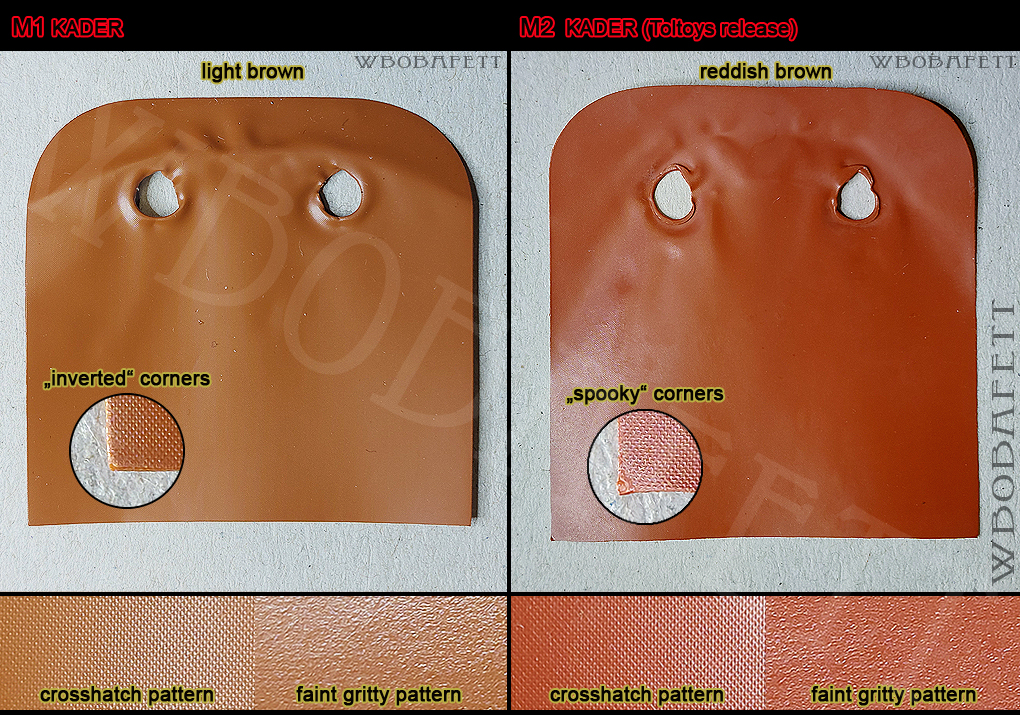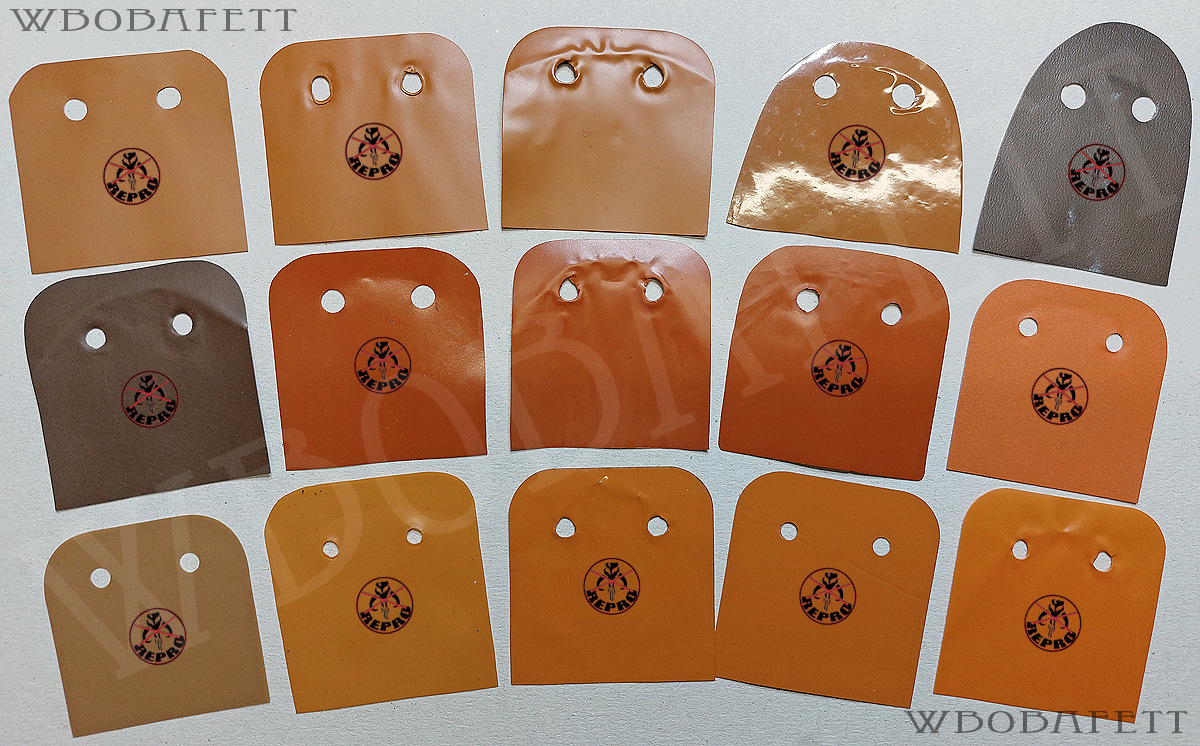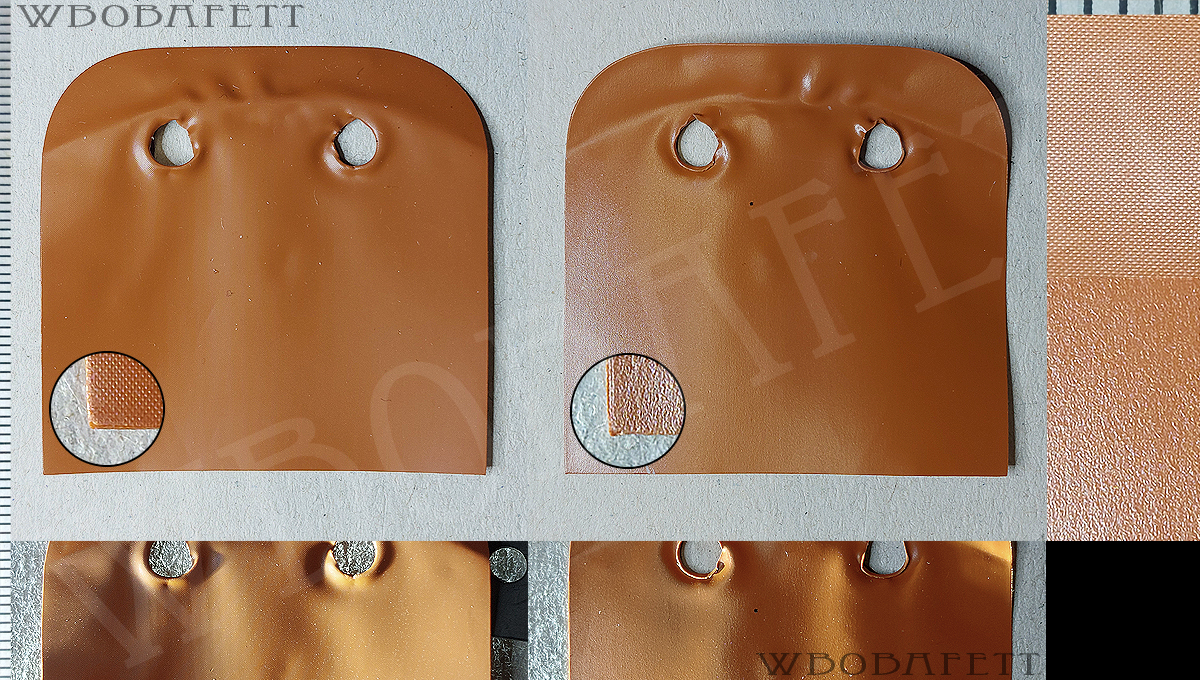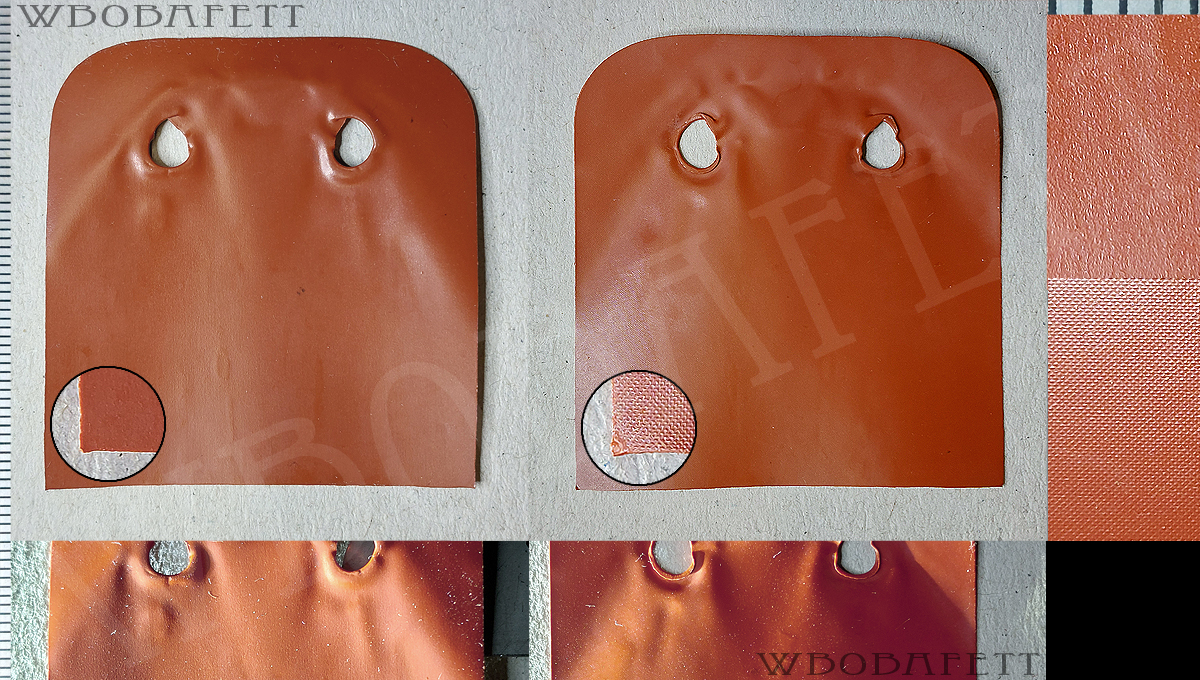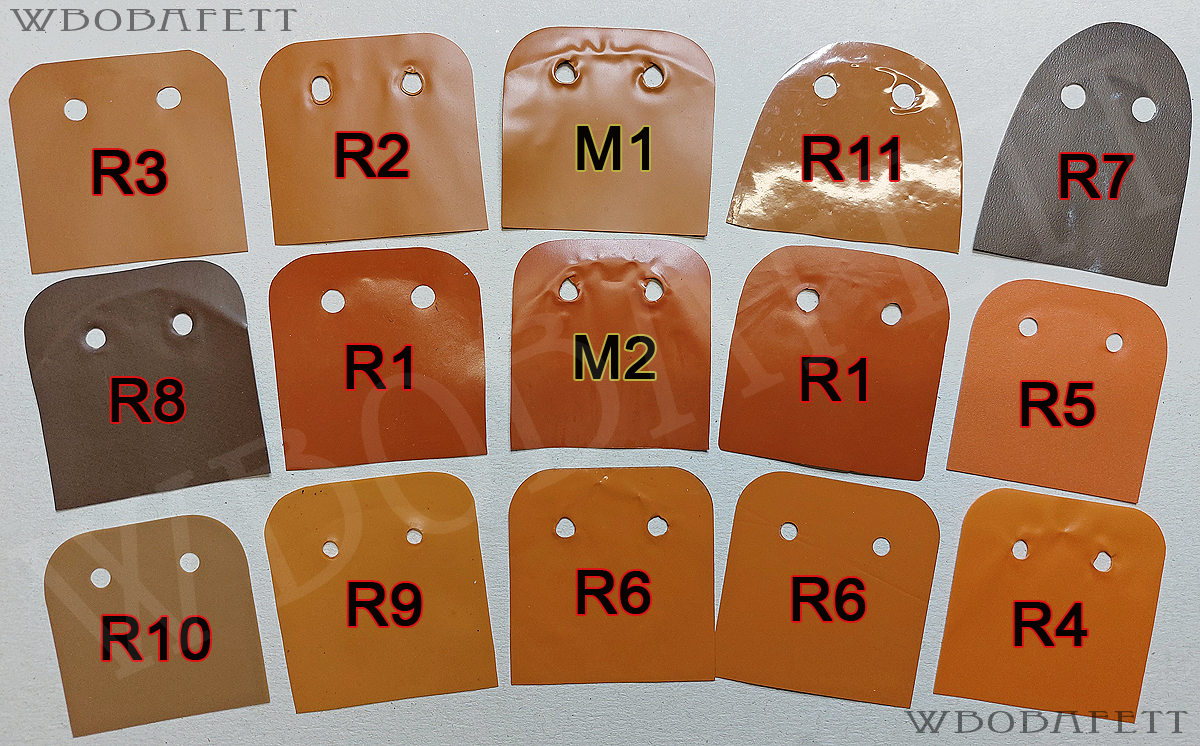Jawa Vinyl Cape
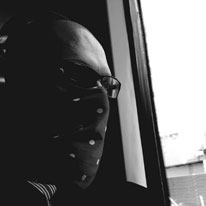
Wolff
TABLE OF CONTENTS
The Jawa Vinyl Cape was usually released with the following combinations of colour to figure:
Light Brown Vinyl Cape:
Reddish Brown Vinyl Cape:
Vinyl cape material (PVC) is made out of a heated mass, rolled and milled in several processes to finally get printed or not. That is important to know, because shrinkage can occur to them when heated again, also depending if they were cold milled or heated milled in the last steps and the directions they were milled. Giving exact dimensions of 35+ year old PVC capes is not very helpful for a guide. They were likely die-cut under tension which would also contribute to capes produced in varying sizes from the same source.
So overlaying those to see differences isn’t helpful in most cases. What we have to do is look for overall differences in shapes, forms and die-cuts. For that reason I will refrain on measurements on all vinyl capes but have a scale on all my pictures for reference.
A Jawa Vinyl Cape does not have a given front or back. A front and back side was then assigned to make them comparable in the guide.
The guide to the later used Jawa fabric cloaks can be found here:
M1 is the 12A-back debut Jawa release by Kader. The vinyl cape Jawa was quickly replaced with a cloth cape Jawa. The transition already happened on the 12A cardback, but vinyl cape Jawas have also been found on 12B and 12C-backs. You can find more information in the Jawa Cardback Guide.
M2 should be seen as a completely separate variant to the original vinyl caped SW-era Jawa release and is traced back to a 41E cardback, distributed to the Australian market by Toltoys.
The main difference between M1 and M2 is obviously in the colour of the PVC used. The corners are cut differently, and the entire cape has a different appearance in terms of length and width. Both versions feature a crosshatch pattern.
Above I have tried to create an overview between the many reproductions in circulation and the two legitimate capes M1 and M2. As reproductions improve over time, it is important to pay attention to the crosshatch pattern (also the size of the pattern), the faint grainy pattern of the other side, and the die-cut corners, each of which has a unique appearance.
M1 was produced by KADER in Hong Kong. The vinyl cape Jawa was quickly replaced with a cloth cape Jawa. The transition already happened on the 12A cardback, but vinyl cape Jawas have also been found on 12B and 12C-backs. You can find more information in the Jawa Cardback Guide. Important features to the cape are the crosshatch pattern (also the size of the pattern), the faint grainy pattern of the other side, and the inverted die-cut corners.
The following versions are known:
Light Brown
M2 was produced by KADER and distributed by TOLTOYS. The cape only seemed to appear on the 41E cardback in Australia. Important features are the crosshatch pattern (also the size of the pattern), the faint grainy pattern of the other side, and the “spooky” die-cut corners
The following versions are known:
- Reddish Brown
R1:
The R1 cape is hand cut out of original Ben Kenobi capes. Depending on the Ben capes used these can come with or without crosshatch pattern. Spotting those can be very difficult but is also heavily depending on the way these were handcut.
The R1 cape closely imitates the M2 version from KADER distributed by TOLTOYS.
The following versions are known:
- Reddish Brown (crosshatch)
- Reddish Brown (no crosshatch)
R2 :
The R2 cape is made out of a very similar material compared to M1. They are die-cut and the overall shape and colour is very close compared to original capes. On the other hand there is no crosshatch pattern present on those, so they still can be spotted if held in hands.
The R2 cape closely imitates the M1 version from KADER.
The following versions are known:
- Light Brown
R3:
The R3 cape is die-cut with hand-cut upper collar corners. Material thickness, colour and overall shape seems close to original capes, yet again there is no crosshatch pattern and one side is extremly glossy.
The R3 cape imitates the M1 version from KADER.
The following versions are known:
- Light Brown
R4:
The R4 cape is die-cut with hand-cut upper collar corners. The material is quite thicker and more rigid. The colour and lenght are off compared to original capes. These capes also don’t come with crosshatch pattern.
The R4 cape imitates the M1 version from KADER.
The following versions are known:
- Orange
R5 :
The R5 cape is die-cut. The material is quite thicker and extremly rigid. The colour and overall shape are off compared to original capes. These capes also don’t come with crosshatch pattern.
The R5 cape imitates the M1 version from KADER.
The following versions are known:
- Reddish Orange
R6:
The R6 cape is one of the most common reproductions floating around. The cape is die-cut and seems to be made out of two selfadhesives sides put together. Therefore the material is quite rigid. The glossy surface on both sides is a good telltale to spot those. Obviously no crosshatch pattern is present on those.
The R6 cape imitates the M1 version from KADER.
The following versions are known:
- Dark Orange (used)
- Dark Orange (unused)
R7:
The R7 cape is one of the oldest known reproductions. I think I remember them being in circulation as early as the 1990s. Given the color and shape, they may have been produced without the intention of deceiving anyone. More likely, they were made to give Jawas who had lost their capes/cloaks at least something to wear.
The following versions are known:
- Dark Brown
R8:
The R8 cape is die-cut with hand-cut upper collar corners. The material is quite thicker and more rigid. The colour and lenght are off compared to original capes. These capes also don’t come with crosshatch pattern.
The R8 cape imitates the M1 version from KADER.
The following versions are known:
- Dark Brown
R9:
The R9 cape is die-cut with hand-cut upper collar corners. The material is flimsy and almost transparent. The colour and lenght are off compared to original capes. These capes also don’t come with crosshatch pattern.
The R9 cape imitates the M1 version from KADER.
The following versions are known:
- Caramel Brown
R10:
The R10 cape is die-cut. The material is similar in thickness but feels very different. A crosshatch pattern is present but the pattern is bigger then it should be. The easiest telltale is the complete wrong colour this reproduction cape is made off.
The R10 cape imitates the M1 version from KADER.
The following versions are known:
- Tan (crosshatch)
R11:
The R11 cape is a very common reproduction floating around. The cape is handcut and seems to be made from reproduction Ben capes. Its material is similar to the R3 capes and they likely come from the same source. Material thickness, colour and overall shape seems close to original capes, yet again there is no crosshatch pattern and one side is extremly glossy.
The following versions are known:
- Light Brown with different cuts and armhole positions
R12:
The R12 cape is die-cut with hand-cut upper collar corners. The material is more rigid and feels like taken from a plastic folder. The colour and lenght are off compared to original capes. These capes also don’t come with crosshatch pattern.
The R12 cape imitates the M1 version from KADER.
The following versions are known:
- Brown
